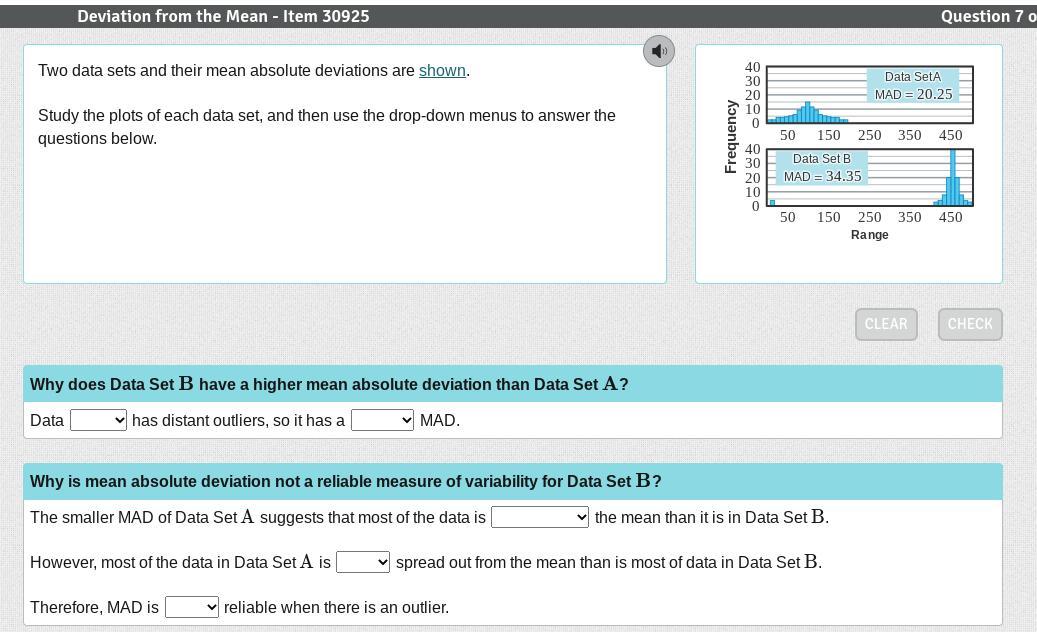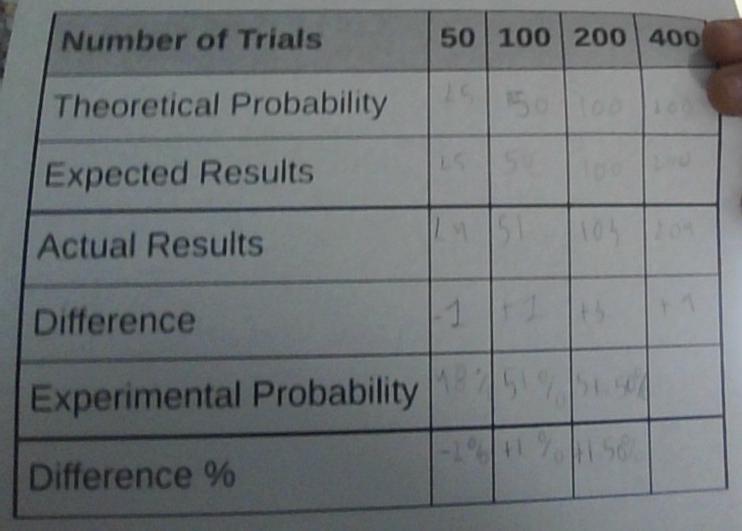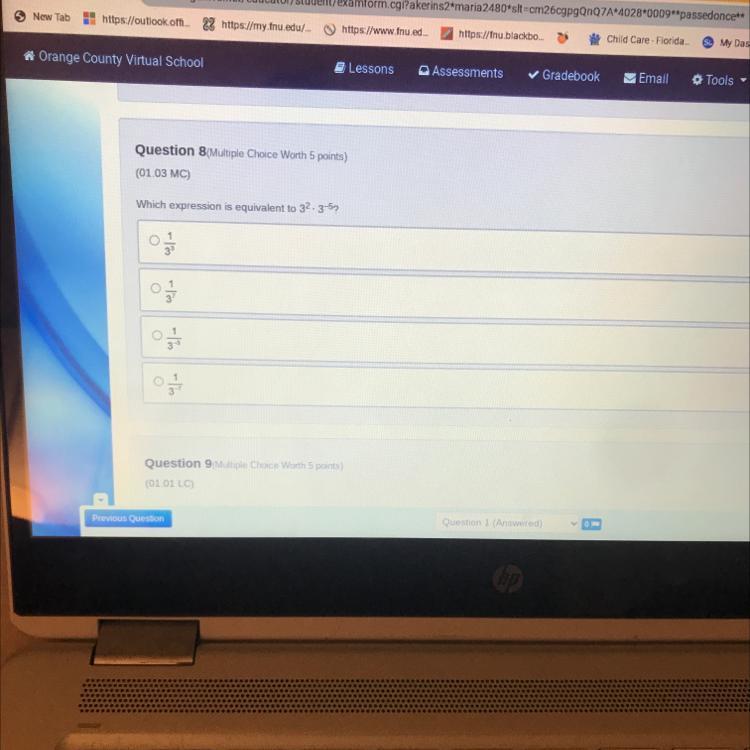Answers
Answer:
Step-by-step explanation:
5•-4= -20
5•-3x= -15x
-6x•-4= 24x
-6x•-3x= 18x^2
Answer:
20 : 15x
:
: : : : :
24x : 18x
:
Step-by-step explanation:
5×-4=20
5×-3x=-15x
-6x×-4=24x
-6x×-3x=18x
// have a great day //
Related Questions
? + 4a-5 = 3a-1? should it be negative?
Answers
-a+4a=3a
-5+4=-1
-a+4
Jason and Beth each have a bank account. Jason starts with $1.65 in his account and puts in $0.20 each week. Beth starts with $2.95 in her account and also puts in $0.20 each week. Complete the table to show how much money each has saved after five weeks.

Answers
Jason=1.85, Beth=3.15
Week 2
Jason=2.05, Beth=3.35
Week 3
Jason=2.25, Beth=3.55
Week 4
Jason=2.45, Beth=3.75
Week 5
Jason=2.65, Beth=3.95
Two data sets and their mean absolute deviations are shown.
Study the plots of each data set, and then use the drop-down menus to answer the questions below.

Answers
Answer:
Step-by-step explanation:
Use internet to read a graph
Can someone reflect on these problems using their own words, I don't know how to describe it. (1 Paragraph or more) Instructions on how to reflect included :) (The problems are solved it's just the explaining)


Answers
i need help with this question please help me

Answers
Answer:
The answer is D.
Step-by-step explanation:
y = mx + b
C = 5/9 (F - 32)
C = 5/9F - 5/9 (32)
Option (D) is correct.
So I have this math project question and I've been stuck for a bit. Any and all questions will be answered.

Answers
Answer:
for row one put 1/2 the numbers. for row 2 put 3/4 of the numbers. row 3 put 1/4 of the numbers.
Step-by-step explanation:
hope you get a good grade and hope we can be friends
A fruit juice recipe calls for 2 parts orange juice and 8 parts pineapple juice. Which proportion can be used to find the amount of orange juice, j, that is needed to add to 18 L of pineapple juice?
2 over 8 equals j over 18
8 over 2 equals j over 18
8 over j equals 2 over 18
16 over 18 equals j over 100
Answers
The correct proportion to use to find the amount of orange juice, j, needed to add to 18 L of pineapple juice is:
2/8 = j/18
This proportion relates the ratio of orange juice to pineapple juice in the recipe (2:8) to the amount of orange juice needed to add to 18 L of pineapple juice. By cross-multiplying, we can solve for j as follows:
2/8 = j/18
218 = 8j
36 = 8*j
j = 36/8
j = 4.5
Therefore, you would need to add 4.5 L of orange juice to 18 L of pineapple juice to create the fruit juice recipe that calls for a ratio of 2 parts orange juice to 8 parts pineapple juice.
Answer:
2 over 8 equals j over 18Step-by-step explanation
2 over 8 equals j over 18
This proportion represents the ratio of orange juice to pineapple juice in the recipe. By setting up the proportion, we can solve for the value of 'j,' which represents the amount of orange juice needed.
So, the correct proportion is:
2 over 8 equals j over 18
Which equation is a direct variation function?
y = x²
y = 1/4x + 2
y = 4
y = x
Answers
y=X equation is a direct variation function.
Sheldon can read 9 pages in 15 minutes. Betty can read 18 pages in 1 hour. Explain how you could use a table or graph to
find how much longer it would take Betty to read a 360-pageants book than Sheldon.
Make a table of
Betty hours longer to read the book.

Answers
First step, make ratios:
Pages: time
Sheldon: 9 pages: 15 minutes
Betty: 18 pages: 60 minutes (1 hour)
To find how long it would be for 360 you divide:
9/15 is 0.6 pages: 1 minute and 18/60 is 0.3 pages per minute
When you make the table here would be the equation:
y=.06x for Sheldon and y=.3 for betty (plug in times and create a table)
Evaulate each expression when n = 2.3
N + 8n2 - 17=
Answers
Answer: 27.62
Step-by-step explanation:
plug in 2.3 wherever 'n' is
I'm assuming that the '2' in 8n2 is an exponent
2.3 + 8(2.3)² - 17 =
Using PEMDAS
start out with exponent since there isn't any parenthesis
(2.3)² = 5.29
2.3 + 8(5.29) - 17
move on to multiplication
8(5.29) = 42.32
2.3 + 42.32 - 17
with addition and subtraction, you do whichever comes first and since this equation starts with addition we'll start there
2.3 + 42.32 = 44.62
then the subtraction
44.62 - 17 = 27.62
Answer:
Step-by-step explanation:
The answer is 27.62
Which of the following sets of ordered pairs represents a function?
{(−4, −4), (−3, −3), (−2, −2), (−1, −1), (0, 0)}
{(−4, −4), (−4, −3), (−4, −2), (−4, −1), (−4, 0)}
{(−4, −4), (−4, 0), (−2, −3), (0, −2), (−2, −1)}
{(−4, −4), (−4, −1), (−2, −4), (−1, −4), (0, 0)}
Answers
Answer:
\(\huge\boxed{\sf Option \ 1}\)
Step-by-step explanation:
For a relation to be a function,
the x-values (domain) in that relation should not repeat.So,
Here, the set of ordered pair that represents a function is:
{(−4, −4), (−3, −3), (−2, −2), (−1, −1), (0, 0)}Because in this set:
Domain = {-4, -3, -2, -1, 0}
Also, the values in the domain are not repeated. So, this set is a function.
\(\rule[225]{225}{2}\)
Answer:
the answer is i (1)
Step-by-step explanation:
because its all are saame
15.023232323........
Irrational or rational?
Answers
Stay safe!! <3
7th grade algebra pls help i will give brainliest

Answers
Answer:
Step-by-step explanation:
Answer:
4x+3
Step-by-step explanation:
3x+x= 4x
5-2=3
4x+3
Part A Can you map shape I onto shape II by a sequence of transformations? If so, give a sequence of transformations that maps shape I onto shape II.
Part B
Complete the sequence of transformations you found in part A, but in a different order. Does this also map shape I onto shape II? What does this mean?
Question 2 Part A
If you reflect any shape across the x-axis and then rotate it 90° clockwise about the origin, do you get the same result as if you reflect it across the y-axis and then rotate it 90° counterclockwise about the origin? What does this mean?
Part B
If you reflect any shape across the x-axis and then rotate it 180° about the origin, do you get the same result that you would if you reflect it across the y-axis and then rotate it 180° about the origin? What does that mean?
Part C
If you reflect any shape across the x-axis and then across the y-axis, do you get the same result that you would if you rotated it 180° about the origin? What does that mean?

Answers
Part C is the answer
mark me brainliest pls
Could someone please help me on this question? I need help!!

Answers
Answer:
Step-by-step explanation:
do you think you could take a closer up one then I will help you.
ANSWER FAST I DON'T UNDERSTAND?

Answers
Answer:
Step-by-step explanation:
I would ask my teacher for help if no, then it seems like you would mark a line in the numbers line or smth just giving you an idea sorry if this never helped :(
What is the median of this data set?

Answers
Answer:
58
Step-by-step explanation:
It is the middle point/dot
in the box with the line
would anyone do these for 100 points and brainliest you dont have to graph it on number line tho

Answers
Answer:
1. 39
2. 96
3. 1/2
4. 48
5. -32
6. 34
7. 1.44
8. 9/8
9. 3.5
Step-by-step explanation:
96
1/2
48
-32
34
1.44
9/8
3.5
Question 8(Multiple Choice Worth 5 points)
(01.03 MC)
Which expression is equivalent to 32.3-52
0
3³

Answers
Answer:
1/3^3
Step-by-step explanation:
The answer is 1/3^3 or 1/27 because 3^2 is 9 and 3^-5 is 1/243. This results in the equation 9 x 1/243. When simplified you get 1/3^3 or 1/27.
3^2(3^-5) = 3^2-5 = 3^-3 = 1/3^3
25.34 times 1,000 = ??
PLEASE SHOW AND/OR EXPLAIN YOUR WORK ON HOW YOU GOT THE ANSWER
Answers
Answer:
Step-by-step explanation:
25.34
x 1,000
——————
253,400
So the answer is 25340, hope this helps :)
Given that 1+5b+9c=1 , 4a+2b+3c=2, 7a+8b+6c=9
what is 741a + 825b + 639c?

Answers
Answer:
741a + 825b + 639c = 1375/9.
Step-by-step explanation:
To solve this problem, we need to first find the values of a, b, and c that satisfy the given system of equations. We can use any method of solving systems of linear equations, such as substitution or elimination. Here, we will use the elimination method:
Multiplying the first equation by -4 and adding it to the second equation, we get:
-20b - 36c = -2
Multiplying the first equation by -7 and adding it to the third equation, we get:
29b + 45c = 8
Multiplying the second equation by -29/20 and adding it to the third equation, we get:
-21b - 39c = 67/10
Now we have three equations in two variables. We can solve for b and c using any method, such as elimination or substitution. Here, we will use substitution:
From the second equation, we can solve for a in terms of b and c:
a = (2 - 2b - 3c)/4
Substituting this expression for a into the third equation, we get:
741/4 - 825/2 b + 639/6 c = 9
Simplifying and solving for b, we get:
b = (3/5) - (3/5) c
If this helps, please mark my answer as brainliest
Substituting this expression for b into the second equation, we get:
(27/5) c = (2/5)
Solving for c, we get:
c = -(2/27)
Substituting this value of c into the expression for b, we get:
b = (3/5) - (3/5) (-2/27) = (11/27)
Substituting the values of a, b, and c into the expression 741a + 825b + 639c, we get:
741a + 825b + 639c = 741[(2 - 2b - 3c)/4] + 825b + 639c
= 741[(2 - 2(11/27) - 3(-2/27))/4] + 825(11/27) + 639(-2/27)
= 741(5/27) + 275/3 - 426/9
= 1375/9
Therefore, 741a + 825b + 639c = 1375/9.
(Describe the likelihood of the event given its probability) The probability that one person wins a chess match is 1
Answers
Referring to the Fig, this sequence of toothpick figures has 6
toothpicks in Term 1, 11 toothpicks in Term 2, and 16 toothpicks in
Term 3. What rule can be used to find the number of toothpicks for
any term of the sequence?
a. term number × term number + 7
b. term number × 5
c. term number × 5 + 1
d. term number + 5

Answers
HELP PLEASEEEEEEEEEEEEEEEEEEe

Answers
explanation:
nc y=mx+b !!!
30 POINTS
Describe a real-world situation in which opposite quantities combine to make zero.
AT - LEAST 3 SENCETENCES NO COPYING OR PLAGARISM IF SO I WILL REPORT DO THIS IN YOU'R OWN WORDS
Answers
Answer:situations in which opposite quantities combine to make 0. For example, a hydrogen atom has 0 charge because its two constituents are oppositely charged; and understand p + q as the number located a distance |q| from p, in the positive or negative direction depending on whether q is positive or negative.
Step-by-step explanation:
Part 1 is multiple choice and worth 60 points.
Part 2 is an essay portion and is worth 40 points.
He must earn at least 86 points to pass the
class. If his teacher already graded Part 1
and he earned 54 points, how many points
will he need to earn on Part 2?
Answers
Answer:
32 have a nice day (;
Step-by-step explanation:
Explanation: He will need at least 32 points. This is because 86-54 is 32.
Hope this helps :)
what is the greatest common factor of 14 and 20
Answers
Answer:isn’t
Step-by-step explanation:it 2
The greatest common factor of 14 and 20 is 2 .
Given,
HCF of 14 and 20
Now,
To calculate the HCF of 14 and 20,
Firstly obtain the factors of 14 and 20
14 = 2 × 7
20 = 2 × 2× 5
Now ,
The greatest common factor of 14 and 20 will be 2 .
Know more about HCF,
https://brainly.com/question/29114178
#SPJ6
Please help i am being timed. For every 2 adults there are 7 kids. There are a total of 180 people. How many adults and kids are there out of the 180 total?
Answers
Answer:
40 adults and 140 kids
Step-by-step explanation:
40 adults
pairs of adults= 20
20 x 7kids= 140 kids
40 adults plus 140 kids = 180 total
Answer:
40 adults and 140 kids
Step-by-step explanation:
for every 9 people there are 2 adults and 7 kids
so if there are 180 people in total we would
180 / 9
180 / 9 = 20
so there are 20 groups of 2 adults and 7 kids
40 adults and 140 kids
Solve for m. 10+8m= – 10m–8
m=
Answers
Answer:
Step-by-step explanation: don't know
Explanation:
Step 1: bring -8 to the left since it is less than 10. It would now be 18+8m= -10.
Step 2: you would then move 8 to the right side since you want them to be equal on both sides. it would now be 18= -18m
Step 3: Finally, you divide -18 since you want to find m;you would need to separate them
Answer is m= -1
Choose an expression that is equivalent to the following.
6n + 2(3 - 5n)
A. n+6
B. 16n+6
C. 6-4n
D. 11n
Answers
Answer: C. 6-4n
Step-by-step explanation:
We will simplify the expression and see which one is equivalent.
Given:
6n + 2(3 - 5n)
Distribute:
6n + 6 - 10n
Subtract:
-4n + 6
This is the same as 6 - 4n, so our answer is C. 6-4n
Answer:
6-4n (C.)
Step-by-step explanation:
First you would do 2x3=6
2x-5n=-10n
6n+ -10n= -4n
6-4n
